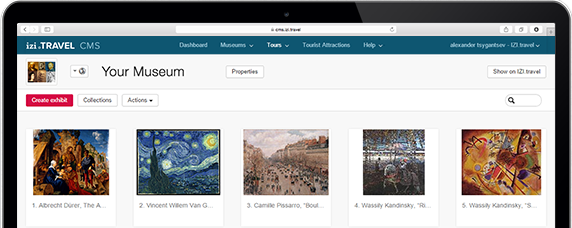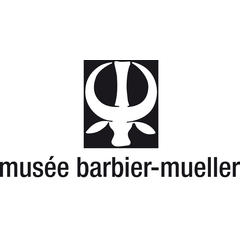Forge bellows
Update Required To play the media you will need to either update your browser to a recent version or update your Flash plugin.
In equatorial Africa, the forge bellows is a quasi-ritual object. Metalworking is regarded as a kind of liturgy, in which the magic of the fire transforms the earthly reddish ore into a precious metal indispensable for the making of weapons and implements.
In South Gabon, Shira and Punu blacksmiths say the bellows or okuka has a symbolic anthropomorphic connotation. Its head and long ringed neck are female and the air orifice is the vulva, but these are associated with masculine elements: the two air compartments covered with antelope skin are the testicles and the single or the twin rods used to work the bellows the penis. Metal forging is thus linked to sexual intercourse, source of all life and the perpetuation of lineages.
This bellows is probably of Punu provenance. The sculpted head, with slightly arched eyes, flared nose and full, well-defined lips, is directly reminiscent of the white masks of the Okuyi. The domed headdress and the diamond-shaped scale motif are typically Punu features.
Forge bellows. Gabon, Shira or Punu. Hardwood with shiny dark patina. H. 62 cm. Formerly Josef Mueller collection, acquired from the antique dealer Anthony Moris in Paris, 4 July 1938. Inv. 1019-21.
Photo caption:
Engraved plate showing blacksmiths, after a photo by Richard Buchtal and taken from Friedrich Rätzel's Völkerkunde, Leipzig, 1885.
In South Gabon, Shira and Punu blacksmiths say the bellows or okuka has a symbolic anthropomorphic connotation. Its head and long ringed neck are female and the air orifice is the vulva, but these are associated with masculine elements: the two air compartments covered with antelope skin are the testicles and the single or the twin rods used to work the bellows the penis. Metal forging is thus linked to sexual intercourse, source of all life and the perpetuation of lineages.
This bellows is probably of Punu provenance. The sculpted head, with slightly arched eyes, flared nose and full, well-defined lips, is directly reminiscent of the white masks of the Okuyi. The domed headdress and the diamond-shaped scale motif are typically Punu features.
Forge bellows. Gabon, Shira or Punu. Hardwood with shiny dark patina. H. 62 cm. Formerly Josef Mueller collection, acquired from the antique dealer Anthony Moris in Paris, 4 July 1938. Inv. 1019-21.
Photo caption:
Engraved plate showing blacksmiths, after a photo by Richard Buchtal and taken from Friedrich Rätzel's Völkerkunde, Leipzig, 1885.
Download the free izi.TRAVEL app
Create your own audio tours!
Use of the system and the mobile guide app is free


